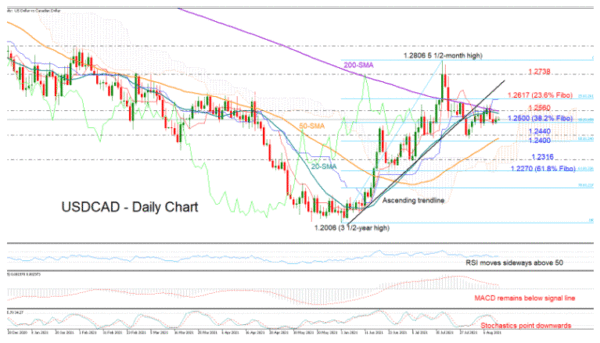USDCAD could barely rotate since the rejection near the 20- and 200-day simple moving averages (SMAs) on Monday, with the price edging up to close slightly above the 1.2500 level on Thursday.
The momentum indicators point to a neutral-to-bearish bias as the RSI, although above its 50 neutral mark, is lacking direction, while the MACD and the Stochastics continue to slope downwards. The latest bearish deviation between the red Tenkan-sen and Kijun-sen lines is further reducing the case for a meaningful rebound.
In trend indicators, signals are mixed. The 20-day SMA is set to reverse south after failing to cross above the 200-day SMA. On the other hand, the gap between the 50- and 200-day SMAs continues to narrow, raising some optimism that the rebound from the 3 ½-year high of 1.2006 could resume above 1.2806 despite the break below the trendline.
If the price proves unable to breach the wall near 1.2560, and instead slips below the 38.2% Fibonacci retracement of the latest upleg, which has been supporting the market around 1.2500 for more than a week now, the focus will shift back to the 1.2440 support area and the 50-day SMA. Should sellers dominate below the 50% Fibonacci of 1.2400, the pair could plunge towards the 1.2316 – 1.2260 zone.
Alternatively, if the bullish scenario prevails, with the price crawling above the 1.2560 resistance region, some consolidation could take place around the 23.6% Fibonacci of 1.2617 and the blue Kijun-sen line. Above this border, the bulls may attempt to overcome the broken ascending trendline and climb up to the 1.2738 barrier.
All in all, the short-term bias is looking neutral-to-bearish for USDCAD. A bounce above 1.2650 could recover some buying interest, while a drop below 1.2440, and particularly a close under 1.2400, could give the lead to the bears.













